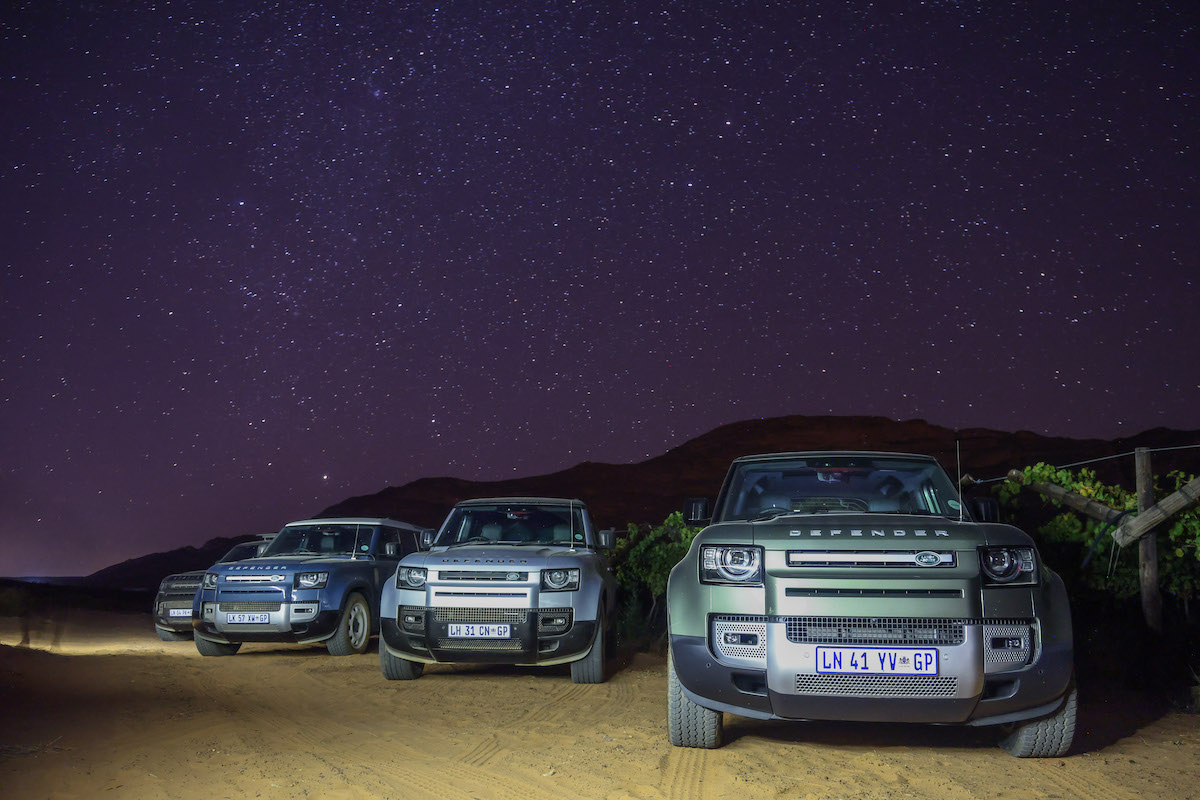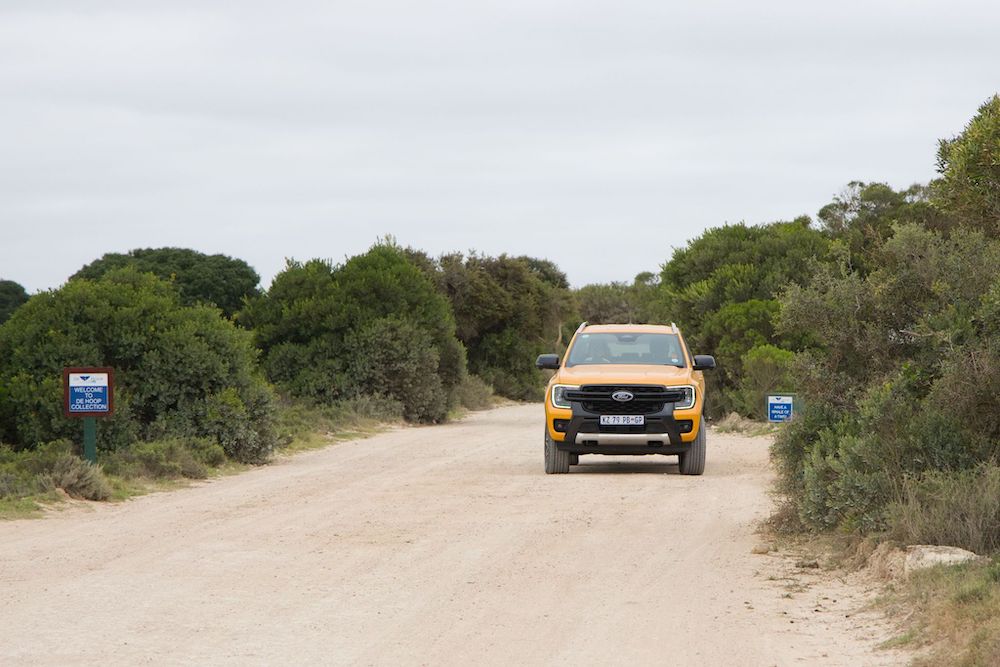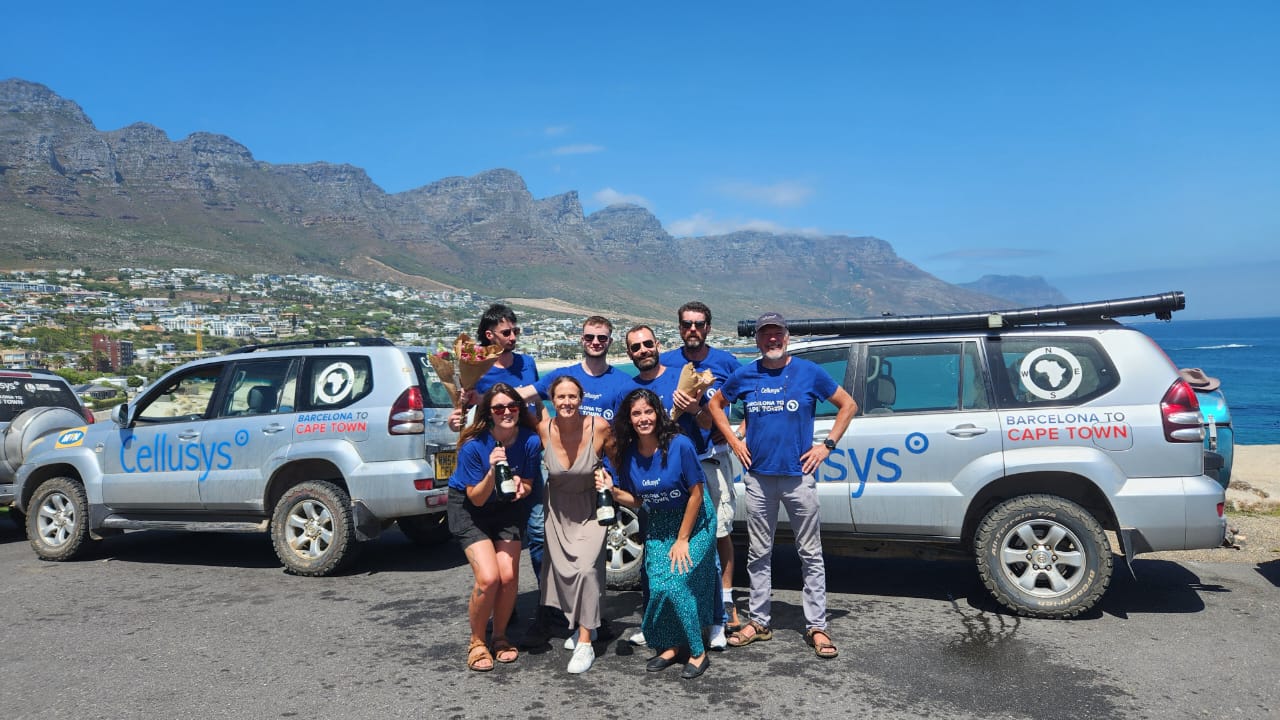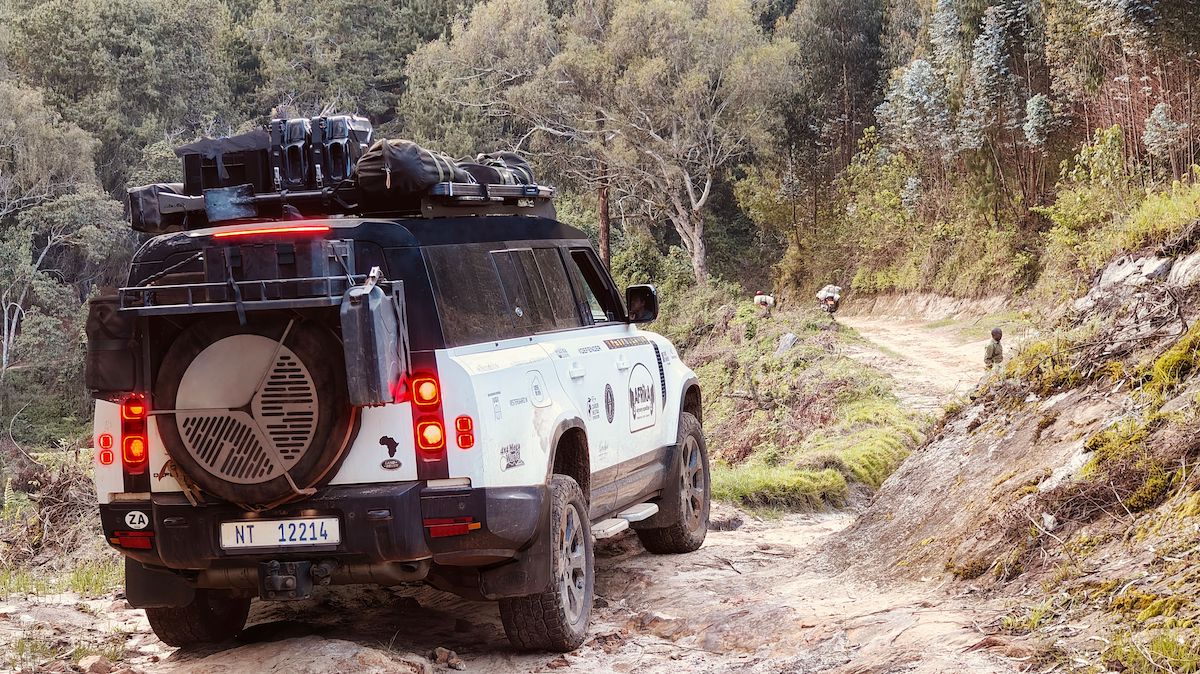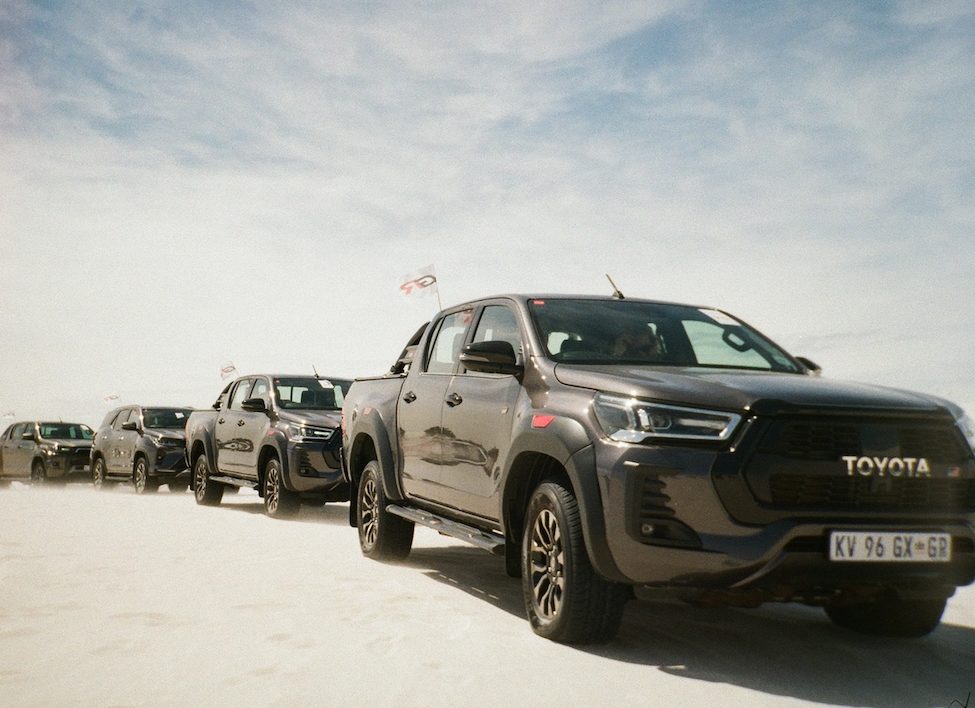After 35 years of leading 4×4 tours throughout southern Africa, it becomes more and more difficult to find a place where you haven’t been before. So Francois Rossouw started investigating new challenges beyond the borders. The RSG4x4Klub headed for Egypt
Text: Francois Rossouw Photographs: Fanie van Rooyen
Following the Dakar Rally places are shown that a person with an itch for adventure would love to experience first hand.
So it was decided. Sahara, here we come.
It took a full year of telephone calls, searching websites and reading to get a plan together. When one of our RSG4x4Klub members, Dr Willem Boshoff , came back from Egypt with the name of a good travel agent and a rough plan of the suggested route, things started falling into place. Our group of 53 people started packing their bags.
The problem with Egypt, though, is that customs require a refundable deposit of double the value of the vehicle. This is to prevent someone from bringing in a vehicle and selling it locally.
For example, to take a new 100-series Land Cruiser Station across the border, you have to fork out the equivalent of R1,5-million!
The 200% deposit is even required when you enter the country with your own vehicle. They calculate the second-hand value of your vehicle and tax you twice the amount. When the vehicle is taken out, they stamp your papers and then the laborious process of claiming your money back starts.
We therefore arranged to hire 4x4s in Egypt from one Hisham, a 4×4 tour operator, who was also to act as tour leader, supply all the camping gear and organise a catering team to feed us.
We landed at Cairo’s airport and were taken to our hotel in the city that never sleeps. We had a pre-arranged dinner cruise on the Nile River and this is when we realised that the Egyptians have no conception of time.
The bus taking us to the boat restaurant only arrived after nine o’clock in the evening. Then the cruiser only pitched up after eleven. It was massive, with four restaurants and seating for more than 400 people. And it was packed.
The dinner was good, although we thought we’d need much more time to get used to the exotic, spicy food.
We only got back to the hotel at 2am, to find the streets as full of traffic as they were at noon, and all the shops still open!
The next morning we were taken to Hisham’s place by bus, where the 4x4s were waiting. It was a mixed bunch, all totally overloaded – and our luggage still had to be packed in!
There were two Land Rover Defenders, three Discoveries, a 100-series Land Cruiser, two Toyota Prados, and the rest 70-series Land Cruisers. When we couldn’t all fit in, Hisham added his Volkswagen Touareg to the list.
With luggage for a three-week tour of Egypt, it was a real mission to make everything fit into vehicles already overloaded, delaying our departure drastically.
It’s difficult to imagine the traffic chaos if you haven’t driven in Cairo before. The city has more than 22 million inhabitants, and three million cars. There are thousands of cars on the roads at any given time, and very few traffic lights or stop streets. Drivers turn four lanes into seven, drive four abreast in a two-lane road, and the sound of hooters is deafening.
South African taxi drivers are meek by comparison. The Egyptians would teach them how to really handle the traffic!
Fortunately Hisham, aware that we weren’t used to driving on the “wrong” side of the road, and this sort of traffic, had organised the Tourist Police to escort us out of town.
Once on the open road, our pace was set by the slowest car in the convoy – a Defender TD5 with 17 mattresses on top of the luggage on the roof, acting as an air brake and keeping the speed down to a maximum of 90 km/h.
Our destination was the Baharia Oasis, about 450km west of Cairo, where we would camp for the night. Thanks to new oil fields in this area, we drove on a new tar road to the previously very remote oasis.
About 10 sq km, the oasis is a paradise of palm trees and water streams. Everywhere pumps suck huge streams of hot water out of the ground. The water flows in channels to cool down before being used to irrigate the palm trees, where it just disappears back into the ground.
We camped close to one of the hot water streams, using it to swim and wash in. The next morning we did a little shopping at the very disorganised streetside shops, while the crew filled all the cars with diesel and bought fresh salads.
The tar road took us about 80km to Crystal Mountain, where we turned into the desert. Although the tour buses go all the way to the Warafra Oasis where the tar road ends, the Crystal Mountain is the closest to real desert they get.
It was very disappointing to hear the tour guides telling the tourists to take a souvenir from the mountain. Large areas of the mountain have already been stripped of all signs of crystal.
From this point we had no roads or trails. We were all dependent on the tour leader. He had his GPS and he knew the Sahara desert like the back of his hand.
We entered the Black Desert, so called because of hard, black iron-like stones that seem to grow out of the ground.
Because of the heavy loads and sharp stones, we could not let the tyres down as much as we should have, with the result that we really battled through the soft limelike sand below the black stones.
As this was his first self-drive expedition through the Sahara, Hisham was very worried about his vehicles.
It wasn’t too long before the Touareg lost the first tyre. We fitted the spare, but soon he had another puncture. The crew fixed it, but after the fifth puncture the tyres were ruined beyond repair, to the extent that we could not carry on.
Someone suggested we fit a Land Rover Discovery rim to the Touareg. The boltholes were the same, but the rim wouldn’t fit over the brake callipers. Fortunately one of the Discoverys had alloy wheels that cleared everything, and we made a quick swap.
The 16″ wheels of the Discovery had a much bigger profile tyre than the original 18″ wheels of the Touareg, so they were just about the same height. The Touareg now looked to be on steroids, and our problems were solved, as there were plenty of Land Rover spare wheels.
We arrived at the Ain Khadra oasis fairly late that night, disappointed that we could not pitch camp in daylight.
The oasis comprises a little hill with five palm trees. Very hot water bubbles to the surface on top of this hill, and runs in a thin stream about the size of a hosepipe into a cement dam about a metre deep and two metres across.
Nobody is allowed near this dam, as this is where drinking water is taken from. The water spills over into another, similarly sized dam where you may bath and swim. From here the water runs into a third dam, where you’re allowed to wash your clothes and dishes. The overflow runs for about two metres, and then sinks back into the sand.
We made camp, washed and spent the night under stars so bright that we thought we might get arc eyes, as you do when welding without eye protection.
The next morning our journey took us into the White Desert. It was an unbelievable sight. Huge calcite formations stood between two and 10 metres high, as far as the eye could see. The route zigzagged through the “statues” and our imaginations worked overtime, beholding fairytale figures in the formations.
One looked like a castle, the next like a princess. It was very beautiful and seemingly endless. Then, after driving 200km through this fairytale land, we found the canyons.
Believe me, the Sahara Desert is big. Everything is larger than life. The canyons are about 10 to 20m deep, and our route wound its way up and down these ravines for more than 100km.
We reached an unbelievably beautiful site in the canyons of El Khabour. We stopped and decided to camp right there on the sand. The stars were as bright as the night before. We lay on our mattresses, watching the satellites go over. It was so special nobody wanted to go to sleep.
On the fourth day we came across a miracle oasis. When we arrived, just a small trickle of water came out of the ground on top of the little hill, but as more and more people started crowding the oasis, the stream of hot water started flowing much stronger, filling the three little dams.
We filled our water bottles, washed and swam – some not wanting to get out of the “swimming pool”.
From here the tour led to a sea of sand, much like the Namib Desert, with dunes and deep sand. We headed towards the Warafra Oasis where we spent the night in a very comfortable hotel. There’s a huge lake, shops and palm trees. In total the oasis must cover about 100ha.
Huge pumps are used to feed various dams, where the water is cooled before being used for irrigation. Hot water goes directly to the hotel’s bathrooms, so there’s no need for electric geysers.
We had a beautiful evening, sleeping in real beds for the first time in a week. The only disappointment was that the hotel had no beer or wine, as drinking alcohol is against the Muslim religion. You could get these refreshments in town, although it was very expensive.
The following day we headed back to Cairo on a 500km tar road running straight through the desert.
Again we had to battle the traffic, but all got back to the hotel safely.
The rest of the trip was spent doing touristy things like going to the Pyramids and practising our bargaining skills at the massive market.
An 800km train trip took us to Aswan, from where we embarked on a three-day luxury houseboat cruise on the Nile.
We visited the Valley of the Kings, went by bus from Luxor – through the desert – to Hurgada on the Red Sea. From there we went to Dubai for a serious desert safari experience, but that’s another story…


